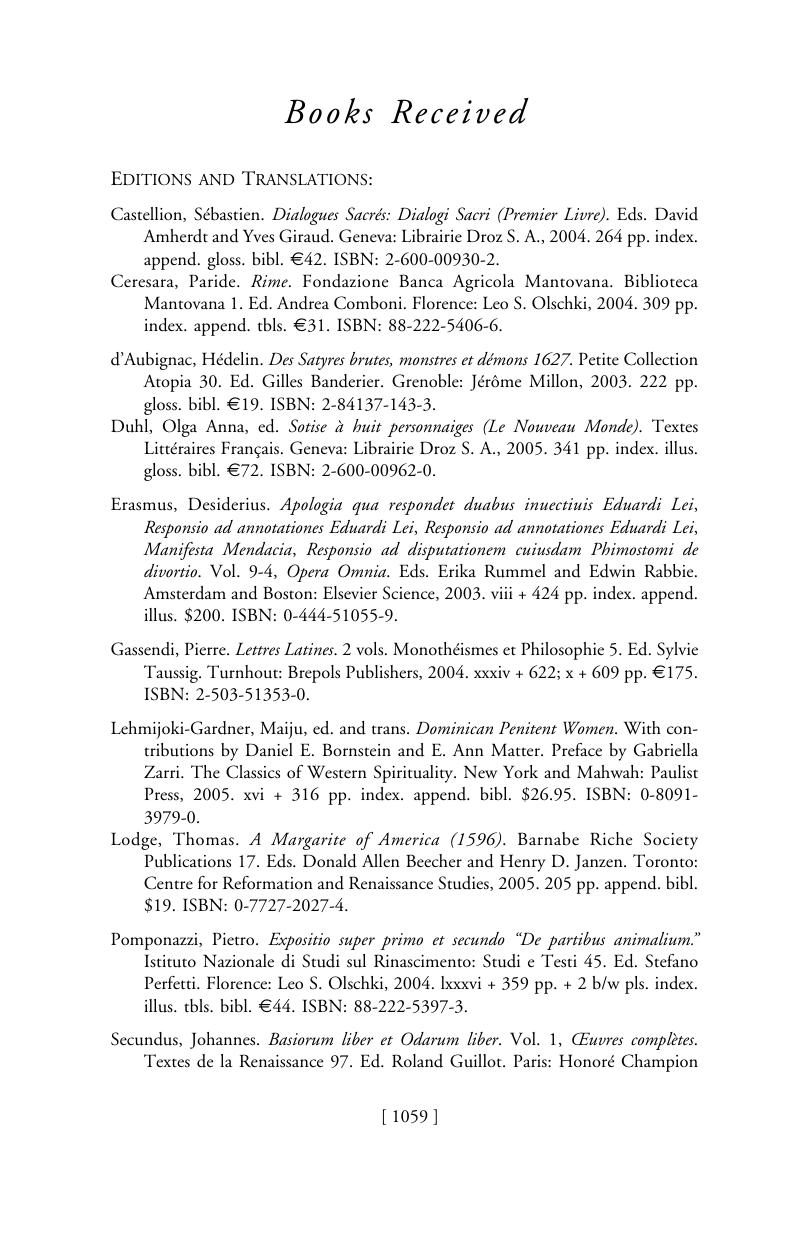David T., Gies, ed.
The Cambridge History of Spanish Literature.
Cambridge and New York :
Cambridge University Press,
2004. xxxiv + 863 pp. index. tbls. chron. bibl. $160. ISBN:
0-521-80618-6.
Includes: David T. Gies, “The Funes Effect: Making Literary History”; Wadda C. Ríos-Font, “Literary History and Canon Formation”; John Dagenais, “Medieval Spanish Literature in the Twenty-First Century”; Maria Rosa Menocal, “Beginnings”; Andrew M. Beresford, “The Poetry of Medieval Spain”; James Burke, “Medieval Spanish Prose”; Charlotte D. Stern, “The Medieval Theatre: Between
scripturaand
theatrica”; Jeremy Robbins, “Renaissance and Baroque: Continuity and Transformation in Early Modern Spain”; Alison P. Weber, “Religious Literature in Early Modern Spain”; Julian Weiss, “Renaissance Poetry”; E. Michael Gerli, “The Antecedents of the Novel in Sixteenth-Century Spain”; Anthony J. Close, “Miguel de Cervantes”; Mary Malcolm Gaylord, “The Making of Baroque Poetry”; Margaret R. Greer, “The Development of National Theatre”; Victor F. Dixon, “Lope Félix de Vega Carpio”; Evangelina Rodríguez Cuadros, “Pedro Calderón de la Barca”; Jorge Checa, “Didactic Prose, History, Politics, Life Writing, Convent Writing,
Crónicas de Indias”; Philip Deacon, “Spain and Enlightenment”; “Eighteenth-Century Neoclassicism”; Joaquín Álvarez Barrientos, “Eighteenth-Century Prose Writing”; “Eighteenth-Century Poetry”; “Neoclassical Versus Popular Theatre”; Derek Flitter, “Romanticism in Spain”; David T. Gies, “The Theatre in Romantic Spain”; Gregorio C. Martín, “Mariano José de Larra”; Susan Kirkpatrick, “Romantic Poetry”; Michael Iarocci, “Romantic Prose, Journalism, and
costumbrismo”; Harriet S. Turner, “Benito Pérez Galdós”; Stephen Miller, “The Realist Novel”; “The Naturalist Novel”; David T. Gies, “The Theatre in Spain 1850–1900”; María Ángeles Naval, “Poetry in the Second Half of the Nineteenth Century”; Lou Charnon-Deutsch, “Nineteenth-Century Women Writers”; Joan Ramon Resina, “The Catalan
Renaixença”; Nil Santiáñez, “Great Masters of Spanish Modernism”; Richard A. Cardwell, “The Poetry of
modernismoin Spain”; Joan Ramon Resina, “Modernism in Catalonia”; C. A. Longhurst, “Modernist Narrative in the 1920s”; Joan Ramon Resina, “
Noucentisme”; Nelson R. Orringer, “Ideas, Aesthetics, Historical Studies”; Joan Ramon Resina, “The Catalan Avant-Garde”; Enric Bou, “Poetry Between 1920 and 1940”; Nigel Dennis, “Prose: Early Twentieth Century”; Dru Dougherty, “The Commercial Stage, 1900–1936”; “Theatrical Reform and Renewal, 1900–1936”; Andrew A. Anderson, “Federico García Lorca”; Michael Ugarte, “The Literature of Franco Spain, 1939–1975”; José María Naharro Calderón, “Twentieth-Century Literature in Exile”; Janet Perez, “Prose in Franco Spain”; Guillermo Carnero, “Poetry in Franco Spain”; Martha Halsey, “Theatre in Franco Spain”; Marvin D’Lugo, “Film and Censorship under Franco, 1937–1975”; José-Carlos Mainer, “Spanish Literature Between the Franco and Post-Franco Eras”; Juan Cano Ballesta, “Post-Franco Poetry”; Brad Epps, “Spanish Prose, 1975–2002”; Sharon G. Feldman, “Post-Franco Theatre”; and Susan Martin-Márquez, “Spanish Literature and the Language of New Media.”
Google Scholar 